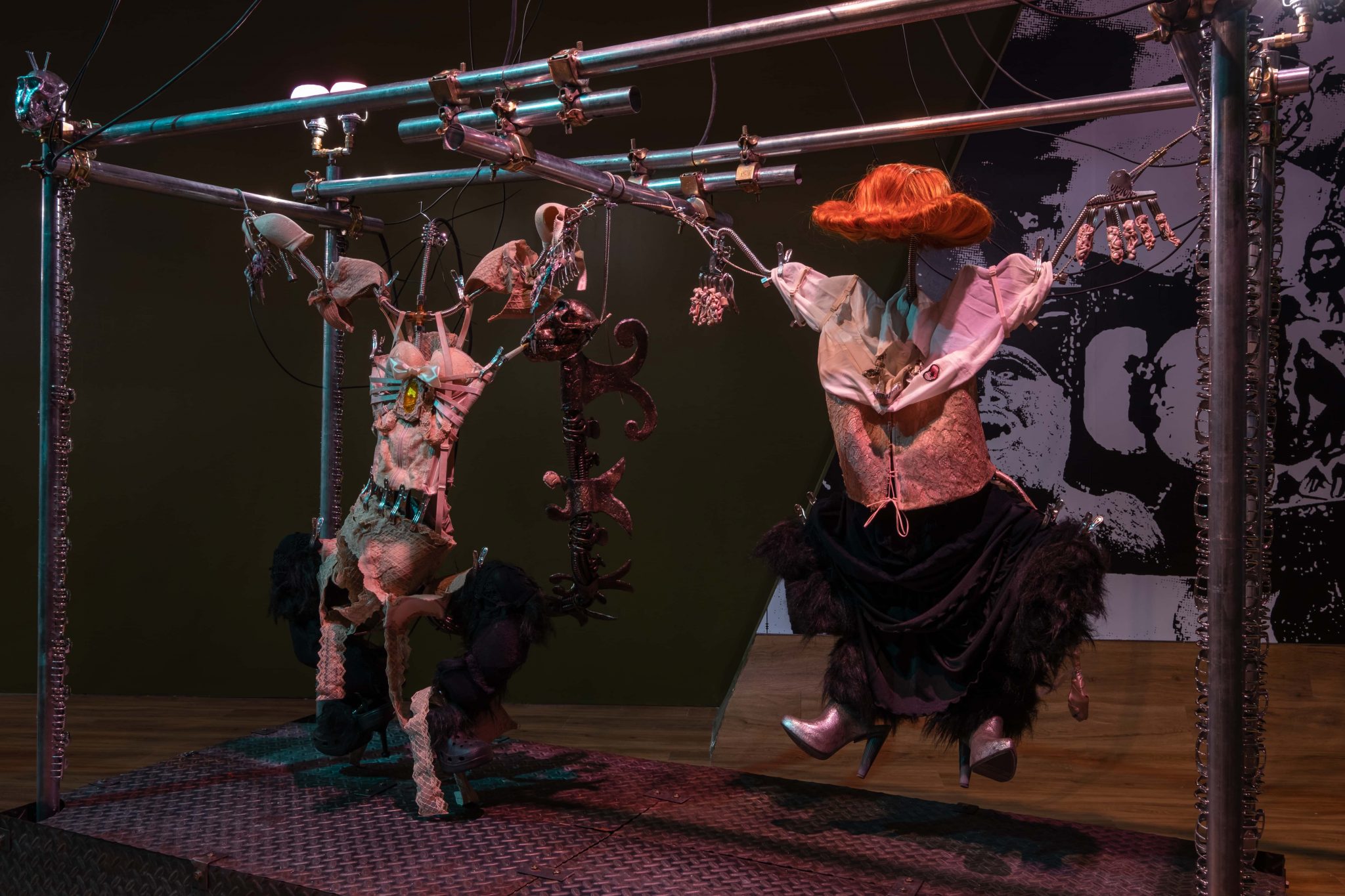Tontey’s practice has gained traction in recent years for her madcap explorations of Indigeneity, ecofeminism and posthumanism. Primate Visions at MACAN, Jakarta goes bananas
‘Monkeys and apes have a privileged relation to nature and culture for western people: simians occupy the border zones between those potent mythic poles,’ writes Donna Haraway in Primate Visions: Gender, Race, and Nature in the World of Modern Science (1989), a book that incorporated postcolonial and feminist discourse into the history of science. It is between these poles that Natasha Tontey’s latest psychedelic, posthumanist extravaganza of an exhibition is positioned. Tontey’s practice has gained traction in recent years for her madcap explorations of Indigeneity, ecofeminism and posthumanism, as well as her joyful pastiche of pop cultural forms such as B-movies, TV melodramas and videogames. Here, her subject is the fraught relationship between two native inhabitants of the Indonesian island of Sulawesi: the critically endangered crested black macaque, whose population is declining rapidly due to habitat loss and the bushmeat trade, and the Indigenous Minahasan people, who treat the monkey (called yaki in native parlance) as a crop-destroying pest as well as a delicacy. In general, this show, which comprises two videoworks and sculptural installations of props and costumes used in the films, revels in the pleasures of blurring the distinctions between humans and animals to create new, cheerful monstrosities that recognise our kinship and continuity with other living creatures.
What you encounter is something like a mad-scientist’s lab filled with various Frankenobjects. You enter through a huge black furry gate modelled after a yaki backside, complete with pink sitting patches and a puckered butthole. Hanging off a metal frame is a thick sheet of rubber that resembles pink, lumpy flesh, with a thick patch of black hair growing at its centre. Elsewhere, there is a macaque-sofa, flesh chair, bone cage and so on. These objects celebrate hybridity, as imagined by Haraway and her followers, as alternatives to dualistic thinking.

Fun and photogenic as these works are, they leave me longing for more moments of reckoning with the discomfort that questioning naturalised categories might bring. For that we have to turn to the videoworks – though not the one that is billed as the centrepiece.Primate Visions: Macaque Macabre (all works 2024) is a 32-minute film shot in Tontey’s DIY aesthetic, with kitschy special effects and wacky characters – think men in monkey suits, a dwarf in a cowgirl outfit and a monkey-woman-machine hybrid with a funky metallic tail. The plot, revolving around two primatologists liberating two macaques from a trap and their ensuing shenanigans, is less of a coherent narrative than a functional setup for characters to perform monologues on the biased and unstable nature of primatology and the importance of respecting the agency of nonhumans, a sentiment now repeated to the point of cliché in exhibitions. In the video, says one of the yaki-suited men, as he leans out of the monkey-butthole gate: “Imagine a world where the boundaries between species blur and intertwine. Where the dance of cell turnover brings unity, weaving a shared existence between tailless macaques and humans.”
Things get darker – and more interesting – in the second videowork (Epilogue: Conversation with the Veteran of Battalion Jin Kasuang), featuring a talkshow-style interview conducted by two yaki (played by the same actors in Primate Visions) of a Minahasan war veteran about his memories of fighting in the Permesta movement of the late 1950s and early 1960s, a rebellion in Sulewasi against the Indonesian central government. In what the wall text calls a ‘fictional account based on real events’, he speaks about his battalion receiving weapons from the United States, eating the flesh of enemies and traitors, and his brother wearing severed ears as amulets. (Most of the things he says can be verified online, apart from the cannibalism, the amulet ears and sundry other supernatural phenomena.) Whether all of this is true or not, the elder’s harrowing account – delivered in a relaxed, even jokey manner – made me feel alternating amusement and horror.
On one level, this video is a stark reminder of the violent history of Minahasan resistance movements and a reality check to Tontey’s optimistic speculations about the possibility of primate–human kinships – because history tells us coexistence between members of one species is complicated enough. On another level, the interview’s setup – monkeys interviewing a man about his war crimes in a curious and nonjudgemental manner – suggests less-benevolent affinities between primate and human societies, such as warfare and cannibalism. The discomfort that Epilogue generates is a counterpoint to the exhibition’s overall affable posthuman celebration of how we are all interconnected in nature. Maybe we do share much more with other animals than we previously thought, and it’s not always the PC stuff.
Primate Visions: Macaque Macabre at Museum MACAN, Jakarta, through 6 April
